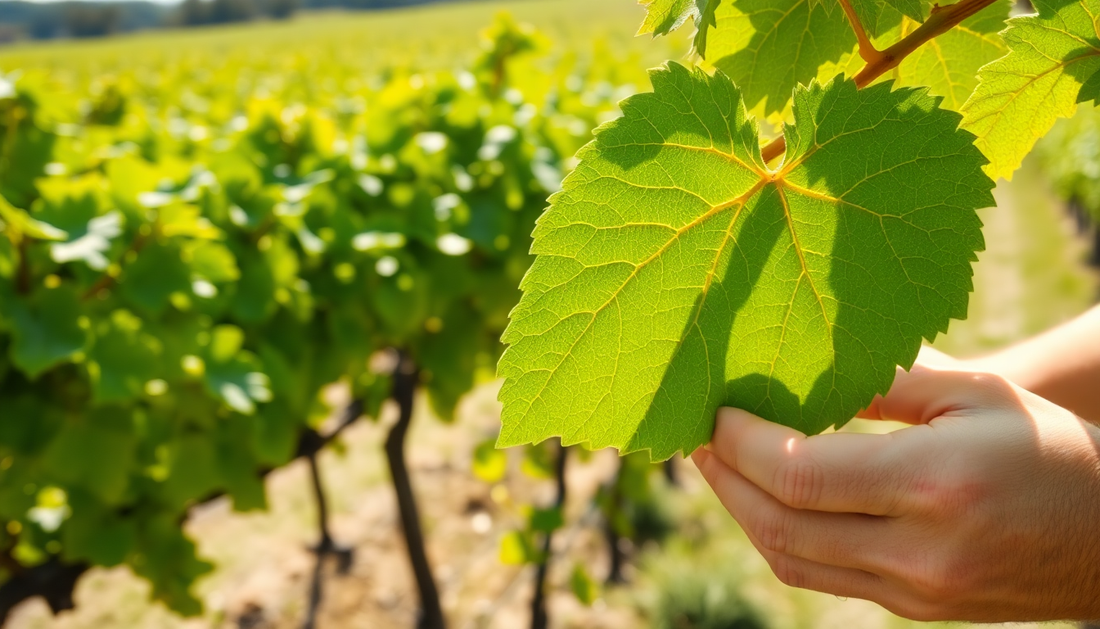
Preventing Powdery Mildew on Your Grape Vines: A Comprehensive Guide
As a passionate gardener, I know the frustration that comes with battling plant diseases. One of the most common and troublesome issues faced by grape growers is powdery mildew. This fungal infection can wreak havoc on your vines, reducing yields and compromising the quality of your grapes. However, with the right knowledge and proactive approach, you can effectively prevent and manage powdery mildew on your grape plants.
In this comprehensive guide, we'll explore the causes of powdery mildew, the signs to look out for, and the most effective strategies to keep your grape vines healthy and thriving. Whether you're a seasoned grape grower or just starting out, this post will equip you with the tools and techniques to ensure a bountiful harvest and beautiful, disease-free grape vines.
Understanding Powdery Mildew
Powdery mildew is a fungal disease that affects a wide range of plants, including grapes. The causative agent is a group of fungi known as Erysiphales, with the most common species affecting grapes being Erysiphe necator (formerly known as Uncinula necator).
This fungus thrives in warm, humid conditions and can spread rapidly, covering the leaves, stems, and even the grapes themselves with a white, powdery growth. As the infection progresses, it can lead to stunted growth, reduced photosynthesis, and ultimately, a decrease in grape yield and quality.
Identifying the Signs of Powdery Mildew
Early detection is key to effectively managing powdery mildew. Keep a close eye on your grape vines and look for the following signs:
Leaves
- White, powdery growth on the upper and lower leaf surfaces
- Curling, distortion, or discoloration of the leaves
Stems and Shoots
- White, powdery growth on the stems and new shoot tips
- Stunted or distorted growth
Grapes
- White, powdery growth on the grape clusters
- Premature ripening or shriveling of the grapes
If you notice any of these symptoms, it's important to act quickly to prevent the infection from spreading and causing further damage to your grape vines.
Preventing Powdery Mildew
The best approach to managing powdery mildew is to focus on prevention. By implementing the following strategies, you can significantly reduce the risk of this fungal disease affecting your grape vines:
Improve Air Circulation
Good air circulation is crucial in preventing the buildup of humidity, which can create the ideal conditions for powdery mildew to thrive. Prune your grape vines regularly to open up the canopy and ensure adequate airflow.
Maintain Proper Moisture Levels
Avoid overwatering your grape vines, as excess moisture can contribute to the development of powdery mildew. Instead, water your plants deeply and infrequently, allowing the soil to partially dry out between waterings.
Choose Resistant Grape Varieties
Some grape varieties are more resistant to powdery mildew than others. When selecting grape cultivars for your garden or vineyard, opt for those with inherent resistance to this fungal disease.
Apply Preventive Fungicides
Using fungicides as a preventive measure can be an effective way to protect your grape vines from powdery mildew. Apply fungicides at the first sign of the disease or as a regular maintenance routine, following the manufacturer's instructions carefully.
Practice Good Sanitation
Remove and dispose of any infected leaves, stems, or grape clusters to prevent the spread of the fungus. Regularly clean and disinfect your pruning tools to avoid transferring the disease from one plant to another.
Monitor and Respond Quickly
Regularly inspect your grape vines for signs of powdery mildew and address any issues as soon as they arise. The sooner you can identify and treat the problem, the better your chances of preventing a full-blown outbreak.
Managing Powdery Mildew Outbreaks
Despite your best preventive efforts, powdery mildew may still occur. In the event of an outbreak, it's important to act quickly to contain the infection and minimize its impact on your grape vines.
Use Targeted Fungicides
If you notice powdery mildew on your grape vines, apply a targeted fungicide as soon as possible. Choose a product that is specifically formulated to combat powdery mildew, and follow the instructions carefully to ensure proper application and timing.
Increase Air Circulation
Enhance air circulation around the affected areas by pruning away any dense foliage or obstructions. This will help to reduce humidity and slow the spread of the fungus.
Remove Infected Plant Parts
Carefully remove and dispose of any infected leaves, stems, or grape clusters to prevent the disease from spreading to healthy parts of the plant.
Monitor and Reapply Fungicides
Continue to monitor your grape vines closely and reapply fungicides as needed, following the recommended application schedule. This will help to keep the powdery mildew under control and prevent it from causing further damage.
Conclusion
Powdery mildew can be a frustrating and persistent problem for grape growers, but with the right preventive measures and a proactive approach, you can successfully manage this fungal disease and maintain the health and productivity of your grape vines.
By understanding the causes of powdery mildew, recognizing the early signs, and implementing a comprehensive prevention and management strategy, you can ensure a bountiful harvest and beautiful, disease-free grape vines. Remember, regular monitoring, prompt action, and a commitment to good gardening practices are the keys to keeping powdery mildew at bay.
Happy grape growing!







No comments